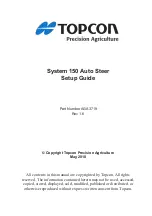
SHORT OPERATION
Raytheon Marine GmbH
Germany
R
NSC
3748DOC02012
Edition: 03.JAN.2005
CURSOR SYMBOLS
NORMAL CURSOR outside the PPI
DEFAULT CURSOR
OFFSET CURSOR
ECDIS CURSOR (option see chapter 2.2.2.2)
Select the
PPI
−
presentation
in favor.
means
Relative Motion
, own ship is stationary and other
objects, including land masses boys, ships at anchor and
ships in motion, move with correct relative speed and course
means
True Motion
, land masses, bouys, ships at anchor,
etc. appear exactly as they are. Objects in motion, including
own ship, move with correct true speed and course across
the operating screen.
means
North
−
Up
, geographic north is upward
−
Stabilized operation
−
.
GYRO
Compass information is
required for North
−
Up operation.
means
Head
−
Up
, heading is upwards
−
Unstabilized operation*
−
.
means
Course
−
Up
, course is upwards
−
Stabilized operation
−
.
GYRO
Compass information is
required for Course
−
Up operation.
means
Reapter
−
Up
, repeater indication is upwards
−
Unstabilized operation
−
.
3.
Day or Night mode
Press this button if you want to change in the night
mode.
T
T
T
T
T
2.
Switch
ON
the NSC.
Press the button 5s, the main power has to be switched on.
The
Run
−
Up
phase is terminated after 190s.
The NSC status is
STANDBY
.
Select this softkey per cursor. The softbutton name changes
to
TX
. The radar is ready for operation.
The attitudes selected last are effective:
These are:
PPI
presentations and adjustments,
Antenna
sensitivities,
last
Sensor
choice.
1.
SWITCH ON THE RADAR,
SELECT THE BEST PRESETTINGS
Check
D
the
ALARM
−
Messages
(detailed information
see chapter 2.3.6.4).
D
the position indication between radar information
panel and position sensor.
D
the radar video with the real area, make a bearing
to a known target (bouy, beacon, church).
D
the magnetron quality. Check it with the performance
monitor (see chapter 2.5.5).
PPI adjustments
Select your required
Range Scale
(highest value
96.0 NM, lowest value 0.125 NM).
Fade the
Range Rings
, Rings are used to make quick
assessment of target’s approximate range from own ship.
The ship symbole appears in the range scale between
0.125 NM to 96.0 NM
or
in the ring scale
0.02 NM to 16 NM.
SITUATION SETTINGS
Antenna Sensitivity controls
AUTO
mode for
TUNE
.
The
TUNE
control is used to tune the Receiver
Frequency to match that of the Transmitter.
The tune adjustment should be made on the
medium or long range scales that show radar returns.
The
GAIN
control adjusts the sensitivity of the radar
display.
AUTO
mode for
SEA, RAIN, FTC
(
SFAR
).
The
SEA
control is used to suppress radar returns which
are the result of radar signals reflected from
waves
.
The
RAIN
control is used to suppress radar returns
which are the result of radar signals reflected from rain
drops
.
FTC
performs differentiating, or filtering of rain clouds.
Search and rescue transponder SART ON is to improve
detection of SART.
Select the puls length, from short to long pulse and vice
versa to optimize the target discrimination with respect
to selected range.
Select the interference function (ON or OFF).
Select the echo expansion (ON or OFF).
SHM
see chapter 2.3.2.1
Cursor
information
in the radar video
range,
see chapter 2.3.5
Antenna
sensitivity
controls
see chapter 2.3.1
Navigation
Electronic bearing lines (EBL) and variable
range markers (VRM)
see chapter 2.3.4
Park position
automatic cursor position
MenuBar
see chapter
2.3.6.6
Information
panel
see chapter 2.3.6
Radar Video
settings
see chapter 2.3.3
Radar Video
displays
see chapter 2.3.2
Radar operator panel
see chapter 2.2.3
used as
SET button
Trackball
*)
Unstabilized operation
means.
No heading
−
or speed
−
sensor was available.
In this case following NSC functions are not possible:
ARPA function, True Motion, Fast Target ON/OFF
Afterglow Trail
Trackball
see
chapter 2.2.2
North
Marker
used to
pick
−
up for
picking
−
up
and
dragging
something
Содержание NSC 18
Страница 1: ...3464 100 037 NSC 18 Navigational Radar System User Manual 3748DOC020102 Edition 14 JAN 2005...
Страница 3: ......
Страница 4: ......
Страница 5: ......













































